Assembly and instructions
If you want to use the Cooler Master Cosmos C700P, you need not only a thick wallet, but even thicker upper arms. It's a humming man who is completely alien to the can-plate feeling. If you moved the housing back and forth several times during assembly, you know what we are writing about. Therefore, a soft ceiling and the complete dismantling of the two side side folding doors, as well as the rear and upper cover, are recommended as a base. This makes everything a little lighter and, above all, more handy.
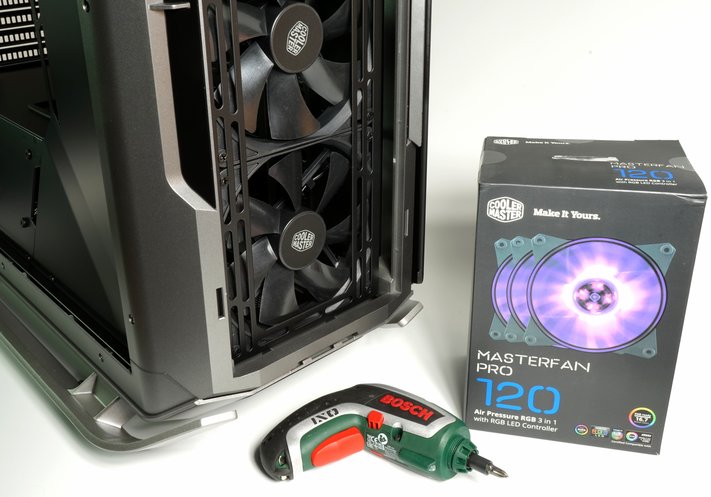
If you want to change the fans, be warned. The long holes in the front do not really harmonize with 120 mm fans and certainly not with the enclosed screws of the Master Fan Pro from our own portfolio. We quickly gave up this conversion, but later we will make up for it with matching machine screws, nuts and rubber dampers. Incidentally, the problem of the long-hole continues at the lid, which in the end also deterred us from taking any further experiments here.
The installed AiO water cooling with its 360 radiator already clearly reached the limits of what is possible and a 420 system definitely no longer fits. The housing is therefore only partially suitable for a more complex custom loop water cooling. In addition, own washers in all sorts are enormously advantageous.
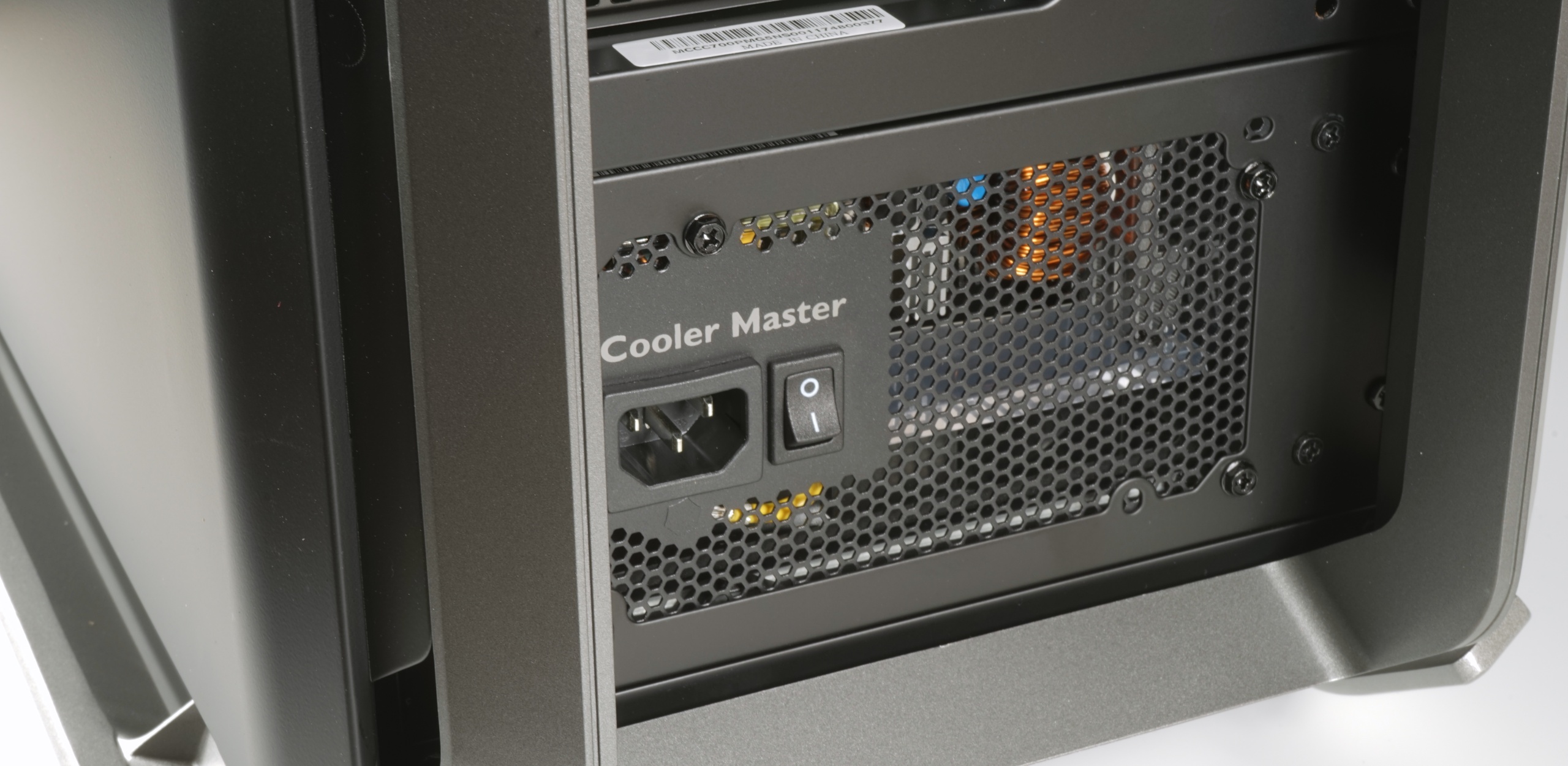
The remaining components up to the power supply, on the other hand, can be mounted without problems, whereby the entire covers offer an optical added value and profit, which is only offset by a one-time, increased work for temporary disassembly. You can accept that, because in the end everything really looks very neat.
Thermally speaking, the installation in the standard positioning still offers the best results. We could have turned the installation on the right side; however, the graphics card should have been installed rotated. But that is precisely what we wanted to avoid for certain reasons. The commissioning and a longer stability test over at least 4 days left us with the calm conscience of a stable running system and also sleep more relaxed at night. Sure, it would have been more expensive, faster, and even bigger, but versatility and affordability ultimately led to this very system.
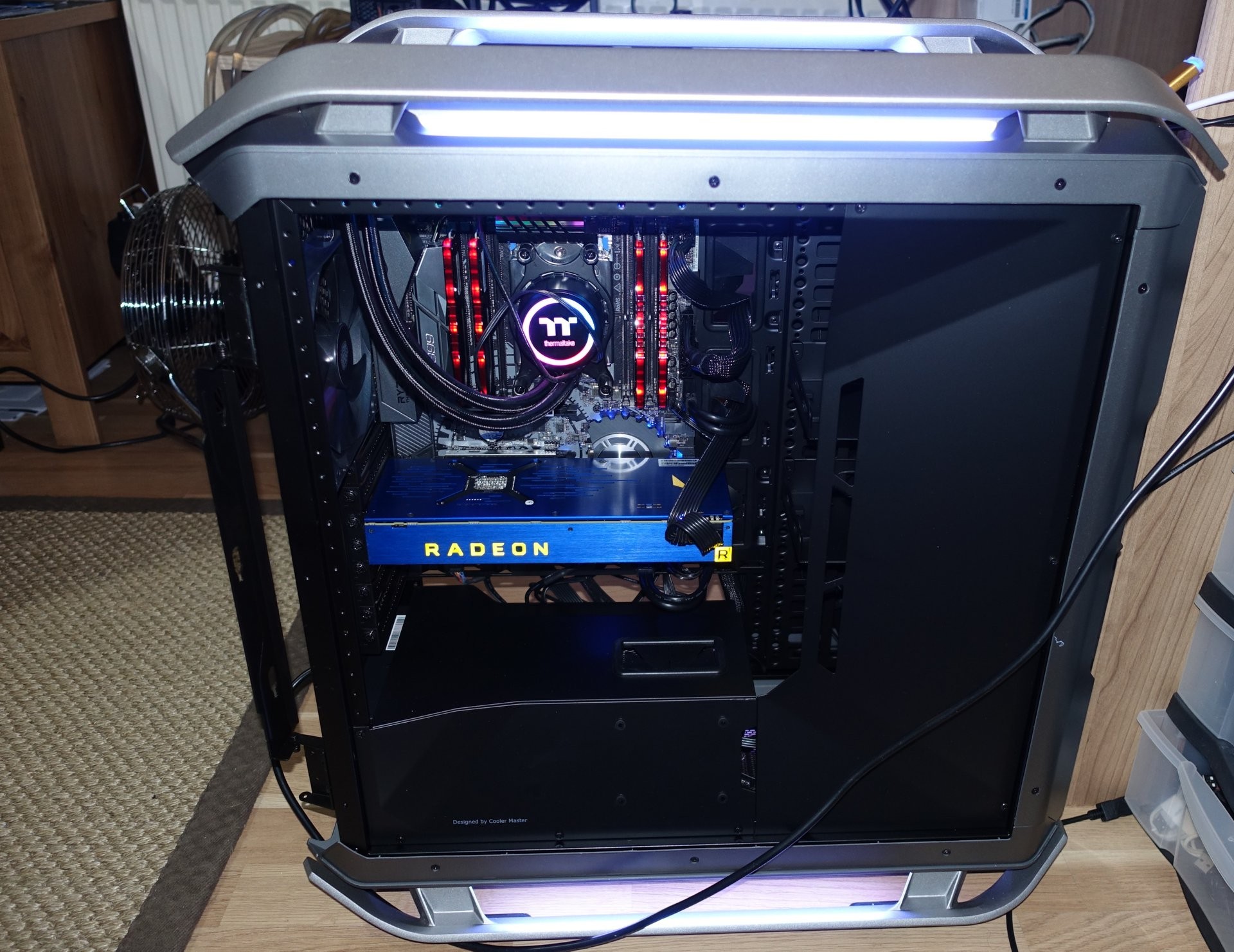
Test results of the new system
With AMD hardware, it's like the good old red wine – she likes to mature, yes, she even has to. Meanwhile, the Threadripper is also running stable with higher memory clock rates, thanks to all bioS updates. And the Radeon Vega Frontier Edition is now doing its job even better than on launch day after various driver updates. From this point of view, it is not surprising that we (must) use this metaphor over and over again to sympathetically describe the first-day dilemma with AMD hardware. But: Patience pays off!
AMD's Ryzen Threadripper 1950X benefits from faster memory, no question. In the 3ds Max 2015, the CPU can increase again properly without having to overclock it manually.
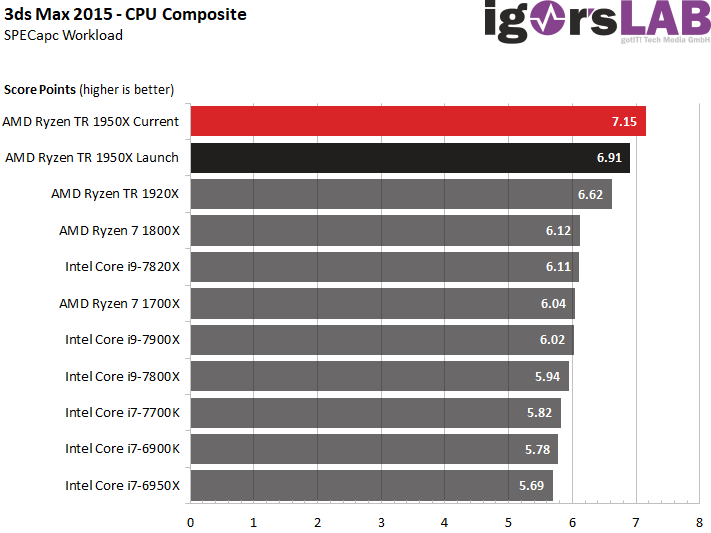
The same applies to Blender, where the growth is somewhat more moderate. Nevertheless, the result is clear and is also very clearly outside any measurement tolerances.
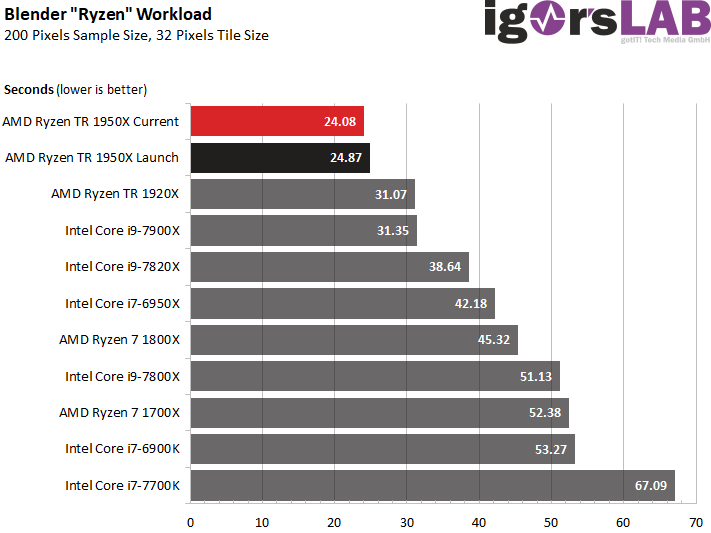
The difference with Cinebench is clear, but here the system benefits from the performance growth of the graphics card and CPU to the same extent. While the launch result refers to the original Threadripper platform and the launch driver of the Radeon Vega FE, the current result (like all other benchmark results) is based on the latest adrenaline driver and the updated BIOS of the Threadripper platform. Again, these are not worlds, but you can feel the growth very clearly.
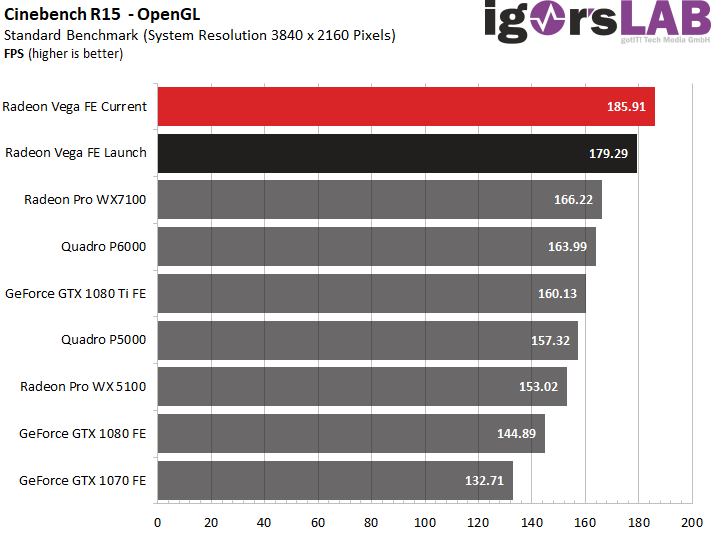
Now let's take the graphics card as a single object and compare the results of the current workstation with those of the Nvidia Quadro P6000 in the same system. Even if we achieve slightly lower values overall than with the higher clocked Intel platform in the past, it can also be seen with the Ryzen Threadripper 1950X.
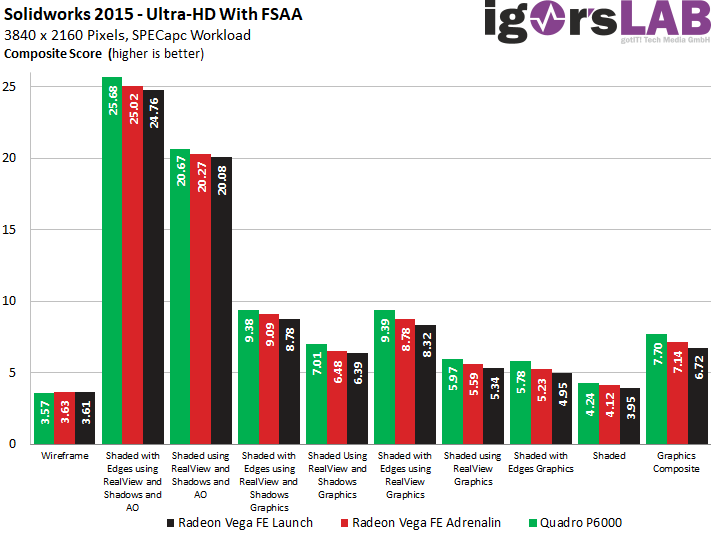
Finally, let's compare the reduced distance to the Nvidia Quadro P6000, which we benchmarked with the latest certified driver. Depending on the sub-composite, the gains of the Radeon Vega FE are quite neat and the distance to the more expensive Nvidia card continues to shrink.
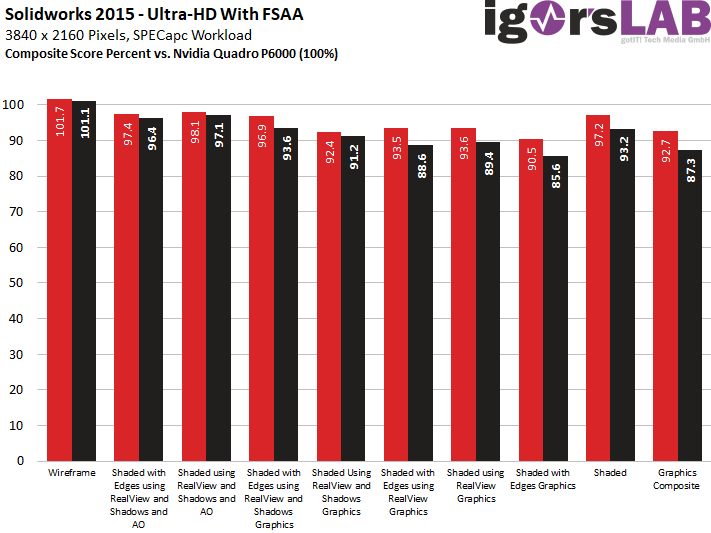
Of course, there are also scenarios where a current Intel Xeon, Core-i7 or Core-i9 can act faster than the Threadripper and also a Nvidia Quadro P6000 of the Radeon Vega FE can show the taillights, but in the sum of all tests the image now looks much friendlier than six months ago.
Summary and conclusion
The days when an AMD system could still be shamelessly called a poor people's workstation are long gone. Even if not everything has been polished to a high gloss, many things are already more than satisfactory. Cheap? yes, sure. But also not cheap in the negative sense. If you put everything in a reasonable relation to each other, you get above-average performance at a really reasonable price. This finding alone is reason enough for some hope that the overall picture and the current portfolio can further consolidate and even increase in performance technology.
And if you can get in on the one hand cheaply, on the other hand there are still some financial room for nice extras. And if it was a monstrous housing, which could have been cheaper but not mandatory. Depending on the application, we now have a fine, egg-laying woolly milk sow for working. And for the very curious: of course you could play with it.
| Compilation | ||
|---|---|---|
| Cpu: | Ryzen TR 1950X | 830 EUR |
| Cooling: | Thermaltake Floe Riing RGB 360 AiO CPU Cooler | 195 EUR |
| Motherboard: | ASRock X399 Taichi | 320 EUR |
| Ram: | 32GB Apacer Fire Blade DDR4 3200 (2 Kits x 2x 8GB) | 450 EUR |
| Graphics card: | AMD Radeon Vega Frontier Edition | 1100 EUR |
| Ssd: | 2x Crucial MX300 1TB SSD | 500 EUR |
| Hdd: | Western Digital WD Red 4TB | 120 EUR |
| Power supply: | Cooler Master V850 80+ Gold | 160 EUR |
| Housing: | Cooler Master Cosmos C700P | 280 EUR |
| Total: | 3955 EUR | |















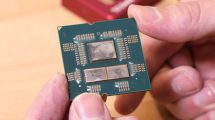















Kommentieren